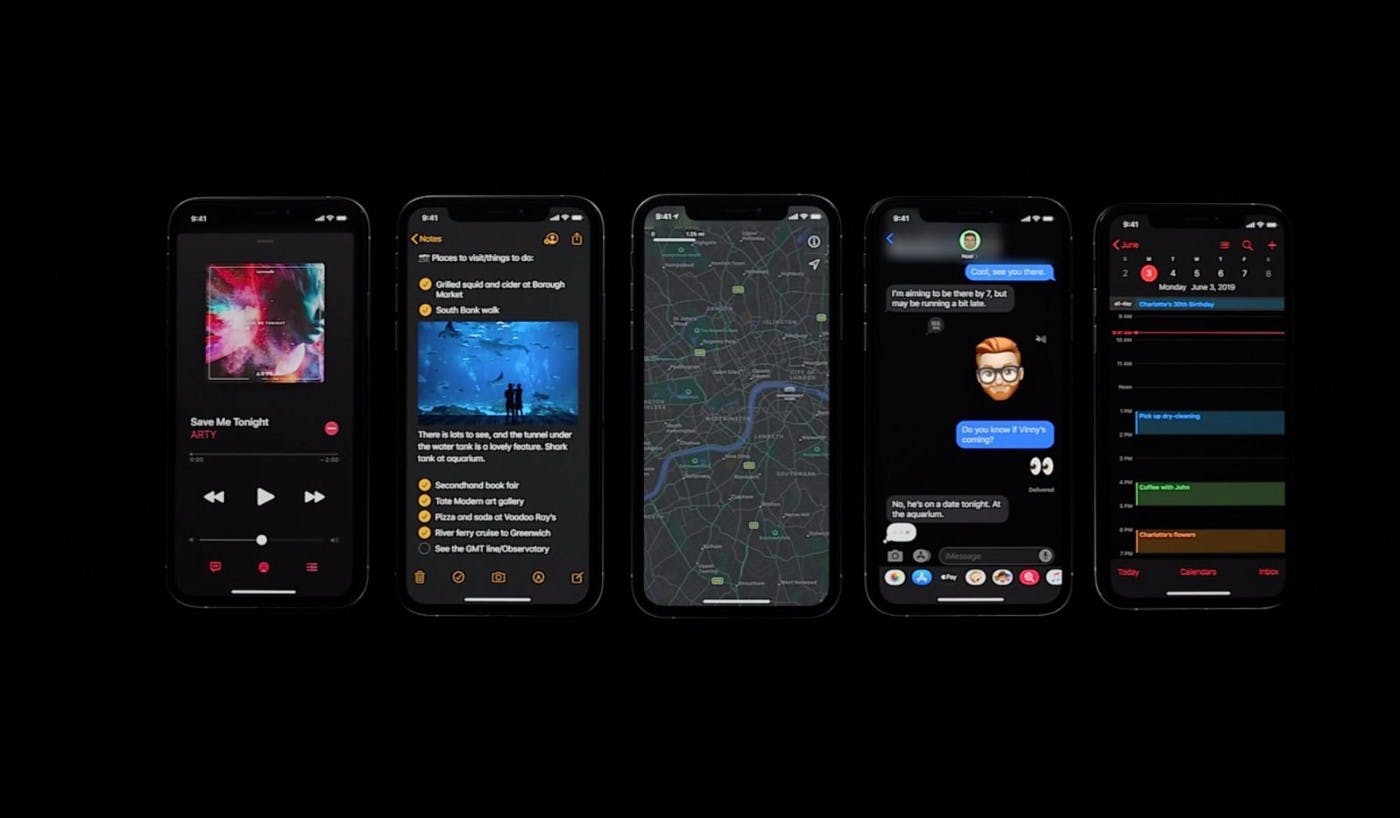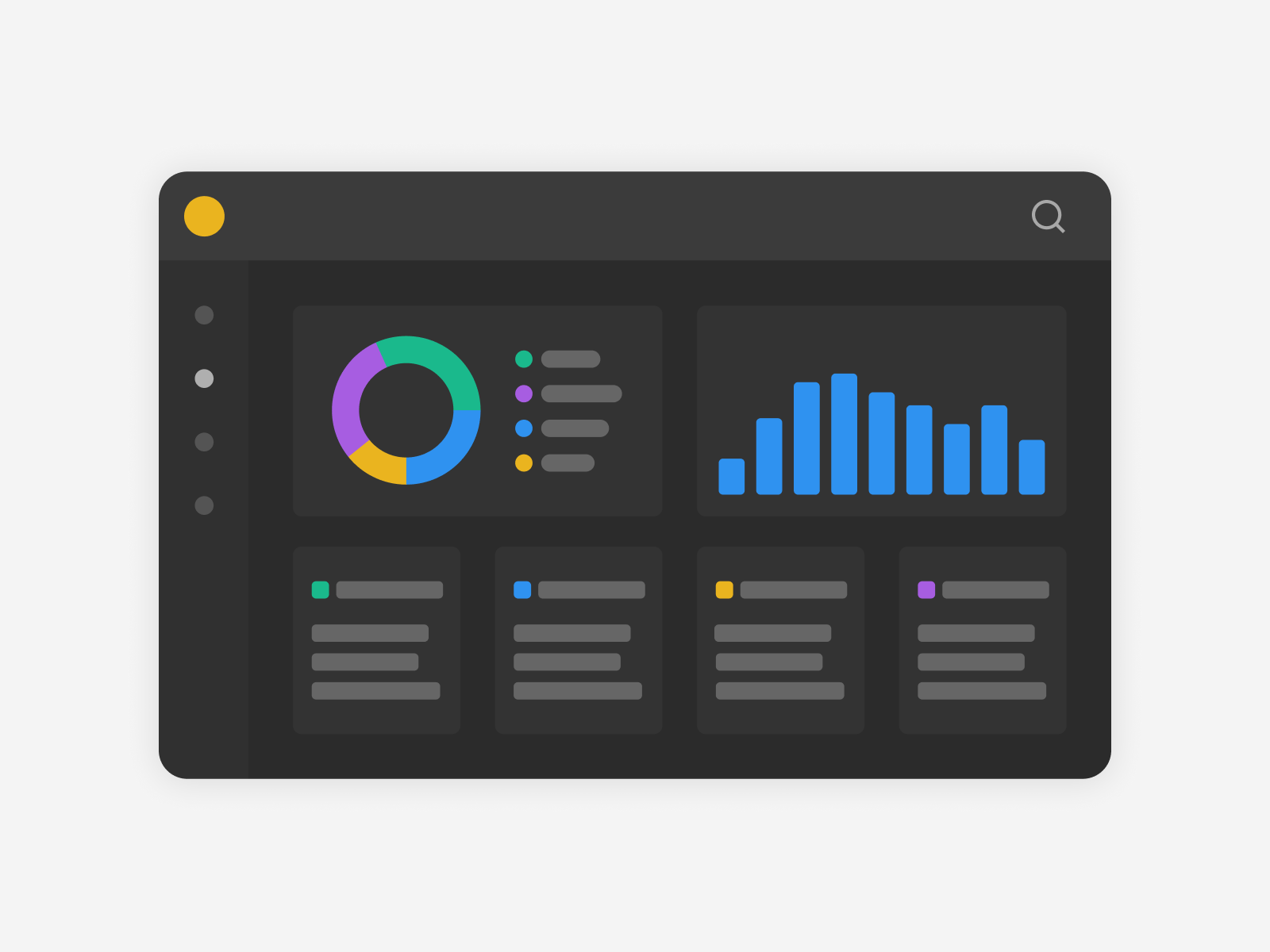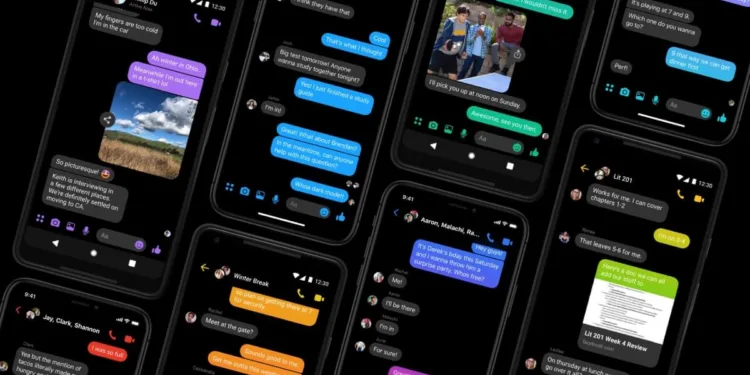Dark mode design has become a popular feature across a range of digital devices, including smartphones, computers, and websites. In simple terms, dark mode is a user interface (UI) design that uses a dark colour scheme, typically a black or dark grey background with light-coloured text and graphics. While dark mode might seem like a superficial trend, it is actually rooted in science.
The Science Behind Dark Mode Design:

The science behind dark mode is based on the way our eyes work. Our eyes are naturally sensitive to light, and when we are exposed to bright light for prolonged periods, it can cause eye strain, headaches, and fatigue. Dark mode design can help to reduce the amount of bright light that our eyes are exposed to, reducing the risk of eye strain and fatigue.
In addition to reducing eye strain, the dark mode can also help to reduce the amount of blue light that our eyes are exposed to. Blue light is a high-energy light that is emitted by many digital devices, including smartphones, tablets, and computer screens.
Exposure to blue light at night can disrupt our natural sleep patterns, making it harder to fall asleep and stay asleep. By using dark mode, we can reduce the amount of blue light that our eyes are exposed to, helping us to sleep better.
Advantages of Dark Mode Design:
There are many advantages of dark mode design beyond its impact on eye strain and sleep.

Some of the key advantages of dark mode design include:
Reduced glare:
Dark mode design can reduce glare, making it easier to view content on digital devices in bright environments, such as outdoors.
Increased battery life:
When using devices with OLED or AMOLED screens, the dark mode can help to extend battery life. This is because black pixels on these types of screens are not illuminated, so using a dark mode design can reduce the amount of power that is required to light up the screen.
Aesthetic appeal:
Dark mode design has a sleek, modern aesthetic that is popular with many users. It can also help to reduce eye fatigue, making it a more comfortable option for extended periods of use.
Benefits of Dark Mode Design for Health:
In addition to its impact on eye strain and sleep, dark mode design can also have broader health benefits.

Some of the key health benefits of dark mode design include:
Reduced migraines:
For people who suffer from migraines, exposure to bright light can trigger headaches. Dark mode design can help to reduce the risk of migraines by reducing the amount of bright light that our eyes are exposed to.
Reduced eye fatigue:
Using dark mode design can reduce eye fatigue, which can lead to a range of symptoms, including dry eyes, blurred vision, and headaches.
Reduced risk of macular degeneration:
Macular degeneration is a common eye condition that can cause vision loss over time. Exposure to blue light can accelerate the development of macular degeneration, so using dark mode design can help to reduce the risk of this condition.
Dark Mode Design and Accessibility:

Dark mode can also have significant benefits for accessibility. People with visual impairments, such as cataracts, glaucoma, or age-related macular degeneration, may find it easier to read text on
a dark background with light-coloured text. Additionally, some people with certain types of dyslexia or visual processing disorders may also find dark mode easier to read.
Furthermore, the dark mode can help to reduce visual fatigue for individuals with sensitivity to bright light or who are prone to migraines or seizures triggered by bright colours or flashing lights.
Dark Mode Design Challenges:

When designing with a dark mode, there are a few challenges that designers need to consider. These include:
Accessibility considerations for users with visual impairments:
Some users may have difficulty seeing content in dark mode, so designers need to ensure that their designs are still readable and usable for everyone. This may involve using high-contrast colours, larger font sizes, or other accessibility features.
Technical challenges in implementing dark mode:
Dark mode can be more complex to implement than a traditional light mode and may require additional coding and testing to ensure that the design looks and works correctly across different devices and platforms.
Potential negative impacts of a dark mode on reading comprehension and cognitive processing:
While dark mode can be easier on the eyes in low-light environments, some research suggests that it may be more difficult to read and process information in a dark mode, particularly for those who are used to reading in a light mode. Designers should consider these potential negative impacts and test their designs with real users to ensure that they are effective and usable.
FAQs:
-
Does the dark mode use less energy than the light mode design?
- Yes, when using devices with OLED or AMOLED screens, dark mode design can help to extend battery life because black pixels on these types of screens are not illuminated, so using dark mode design can reduce the amount of power that is required to light up the screen.
-
Does dark mode reduce eye strain?
- Yes, dark mode design can help to reduce eye strain by reducing the amount of bright light that our eyes are exposed to.
-
Is dark mode better for people with visual impairments?
- Yes, people with visual impairments, such as cataracts, glaucoma, or age-related macular degeneration, may find it easier to read text on a dark background with light-coloured text.
Conclusion:
In conclusion, dark mode is a popular user interface design that has many advantages and benefits, particularly for eye health and accessibility. By reducing eye strain and exposure to blue light, dark mode design can improve our overall eye health and quality of sleep.
Additionally, the dark mode can make it easier for people with visual impairments to read content and reduce visual fatigue for those who are sensitive to bright light or prone to migraines or seizures triggered by bright colours or flashing lights.
As more and more digital devices offer dark mode design options, it is clear that this trend is here to stay, offering a range of benefits for users of all ages and abilities.



















